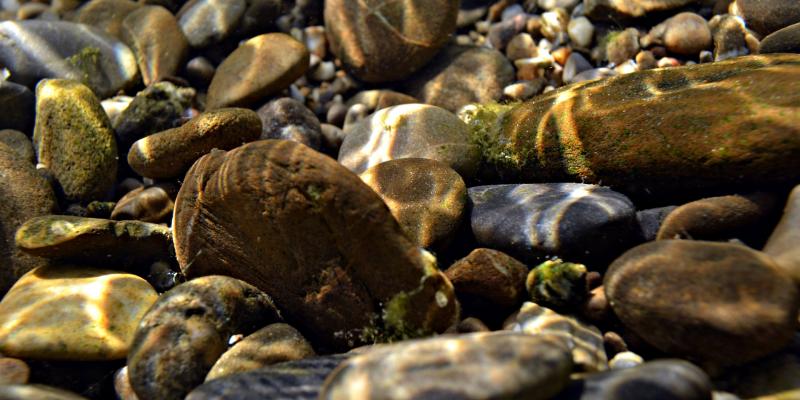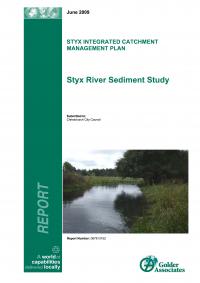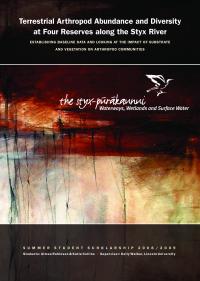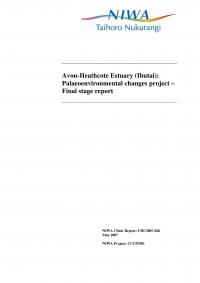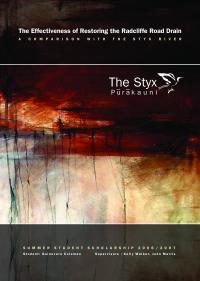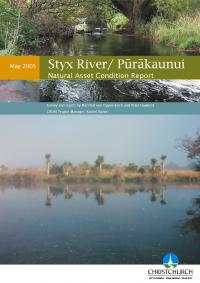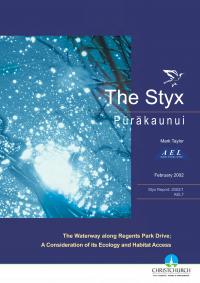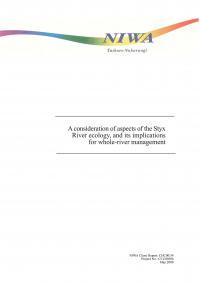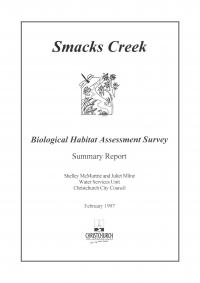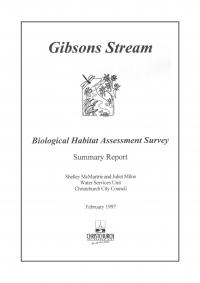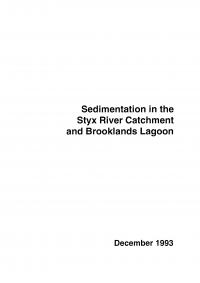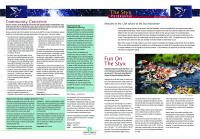Streambed Substrate
Streambed substrate refers to the type of substance on the bottom of the stream. This varies widely from fine sediment, through various sizes of gravels and stones, and up to large rocks and boulders. The type of substrate in a stream is dependent on the geology of the area, but is subject to change as a result of water velocity and surrounding land use. In slower flowing areas, such as pools, the substrate is often finer, whereas faster flowing areas usually have coarser substrates.
Areas with coarse substrate and fast flowing water are known as riffles. These areas are able to support a wider range of aquatic invertebrate and fish species as the coarse substrate provides a range of stable micro-habitats attractive to animals with differing habitat preferences. Riffles present increased hiding places protecting fish and aquatic invertebrates from predators, and offer stable egg laying sites. Water turbulence, caused by the coarse substrate, increases the level of oxygen in the water enabling animals with higher oxygen needs to thrive. Coarse substrate and riffle areas are usually regarded as providing optimum habitat within a waterway.
By comparison, areas with fine silty or sandy substrates support fewer animals, as there is less cover and reduced levels of oxygen. Additionally fine substrate is unstable, moving around particularly during times of increased flow such as flooding and this can cause abrasive damage to animals in the waterway.
Because the type of streambed substrate influences what kinds of animals live in the waterway, any change to the substrate has an effect on the invertebrate population. Streambed substrate can vary over time, particularly if there are changes taking place within the catchment, such as variations in bank management practices or land use. For example, urban development usually results in the substantial addition of fine particles into the stream, which in turn smothers any coarse substrate. Similarly erosion or the collapse of stream banks, often the result of removing riparian plantings, can have the same effect.
By monitoring substrate over a period of time, it is possible to gauge if any changes in land use within the catchment have affected the invertebrate communities and their in-stream habitat.
The streambed substrate is assessed visually using a system known as the “Wolman Walk”. This method is also used when collecting data regarding Aquatic Plants and it is therefore possible to record both types of information during the one data collecting “Walk”.
As the purpose of collecting data is to observe changes in the stream bed, it is important to ensure that the exact same site is used on each monitoring occasion. This can be done either by using a GPS unit to ensure accuracy of location, or by marking out the site with marker pegs. Photographs of landmarks taken on earlier visits can also assist in ensuring that data being collected is from the same site each monitoring visit.
- Working in pairs, one person enters the stream at the downstream boundary of the predetermined 10 metre monitoring site.
- This person begins to wade upstream in a zigzag pattern stopping at every second step to observe which of the 8 different substrate types given in the chart below is the closest in description to the substrate at the toe end of their right foot.
- This data is then relayed verbally to the second person located on the bank of the stream and that person is responsible for recording the data.
The aim is to take about 200 steps across the 10 metre site, resulting in 100 recordings being taken.
- On reaching the 10 metre peg, count up the number of recordings made. If the recordings total more, or less, than 100, convert the result to a percentage of 100.
Substrate Type by Size Category
- mud/silt = fine and smooth, not gritty
- sand = 0.2 - 2 mm (feels gritty)
- gravels = 2 - 60 mm
- small cobbles = 60 - 120 mm
- large cobbles = 120 - 250 mm
- boulder = > 250 mm
- rock = bed of stream is comprised of solid rock
- constructed = concrete


